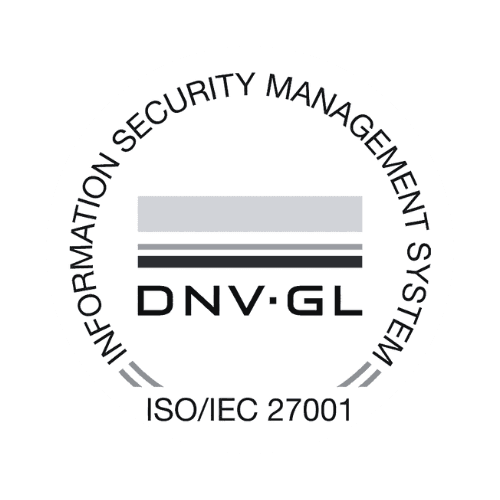Nichts verpassen & anmelden:
Written by AI
The ongoing digitalization and the constantly increasing demands of consumers for transparency and speed in retail call for innovative solutions. One such solution is the 4-Color ESL (Electronic Shelf Label), which not only revolutionizes pricing but also the entire pricing strategy. In this article, we will highlight the various aspects and advantages of the 4-Color ESL.
What is the 4-Color ESL?
The 4-Color ESL is a modern electronic shelf label that enables retailers to efficiently manage prices and other product information. Compared to traditional paper labels, the 4-Color ESL offers a dynamic and customizable way of pricing. The labels can be displayed in four colors, making the representation of information not only more versatile but also more attractive.
Definition and Function of the 4-Color ESL
The 4-Color ESL works through electronic displays that are attached to shelves in stores. These displays can be updated at any time, allowing for immediate adjustment of prices and offers. The labels are usually battery-operated and communicate with central systems via wireless technologies such as Wi-Fi or Bluetooth.
One of the main functions of the 4-Color ESL is to not only show the consumer the price but also to present additional information such as special offers, discounts, or product features in appealing colors. This enhances the shopping experience and facilitates decision-making.
Advantages of the 4-Color ESL
The integration of 4-Color ESLs in retail brings numerous advantages. The most significant include:
Increased Efficiency: Price updates are done centrally, eliminating manual and error-prone processes.
Cost Reduction: Over the long term, costs for printing and paper are lowered.
Improved Customer Loyalty: Attractive and informative displays can increase customer attention.
Data Analysis: Retailers can develop targeted marketing strategies using the collected data.
Another advantage of the 4-Color ESL is the ability to communicate seasonal or limited-time offers in real time. For example, during a sales event, retailers can change the colors of the labels to emphasize urgency and encourage customers to act quickly. This flexibility is particularly valuable in a highly competitive market, where customers are often distracted by various offers.
Furthermore, the 4-Color ESL contributes to sustainability in retail. By reducing paper consumption and minimizing waste, not only is the environment protected, but the company's image is also positively influenced. More and more consumers value eco-friendly practices, and the implementation of such technologies can be a crucial factor in purchasing decisions.
The Role of the 4-Color ESL in Pricing
Pricing is one of the central tasks in retail, and the 4-Color ESL plays a critical role in this. By allowing real-time price adjustments, retail can quickly respond to market changes.
Dynamic Pricing with 4-Color ESL
Dynamic pricing enables retailers to adjust prices based on demand, competition, or seasonal factors. With the 4-Color ESL, the entire process can be automated, saving time and increasing responsiveness.
An example of this could be a discount on perishable food that is displayed on all relevant labels within minutes. This not only attracts customers but also reduces the amount of expired products in the store.
Improving Price Accuracy through 4-Color ESL
Another important feature of the 4-Color ESL is the improvement of price accuracy. With traditional methods, there are often discrepancies between shelf labels and the cash register system. Electronic pricing significantly minimizes these differences.
By integrating with the cash register system, the price of a product is quickly updated and displayed on the label. This promotes customer trust in price transparency and reduces complaints.
Additionally, the 4-Color ESL allows for visual differentiation of prices and offers, drawing customer attention to special promotions. For instance, using different colors for discounts or special offers can make products stand out and influence customers' purchasing decisions. This visual support is particularly beneficial in high-traffic stores, where the competition for buyers' attention is intense.
Another advantage of the 4-Color ESL is the ability to display additional information such as product reviews or origin notes directly on the label. This can help enhance the shopping experience and enable customers to make informed purchasing decisions. In an era where consumers increasingly value transparency and sustainability, this can represent a significant competitive advantage.
Integration of the 4-Color ESL into Existing Market Processes
The implementation of the 4-Color ESL is a significant step towards optimizing market processes. However, there are technical and organizational challenges that need to be addressed.
Technical Requirements for Implementation
To successfully integrate the 4-Color ESL, certain technical prerequisites must be met. These include:
A stable Wi-Fi network for data transmission.
A central management system that allows for the updating and management of labels.
Compatible cash register systems that can work with the ESL graphics.
The technical implementation therefore requires careful planning and possibly adjustments to existing systems. Furthermore, it is crucial to ensure the security of data transmission to prevent possible cyberattacks. This should include consideration of encryption technologies and regular security updates to protect the integrity of the information.
Impact on Employees and Training Needs
The introduction of the 4-Color ESL can also affect staff. Employees need to be trained to handle new technologies and to fully leverage the advantages of the 4-Color ESL.
Comprehensive training should encompass not only technical aspects but also the importance of pricing and an understanding of customer needs. This ensures that staff can confidently and effectively use the new tools. Additionally, establishing feedback mechanisms could be helpful for continuously improving the training process and adapting it to employee needs. Such mechanisms not only promote the acceptance of the new technology but also strengthen employee engagement, as they are actively involved in the change process.
Future Prospects of the 4-Color ESL in the Retail Sector
The 4-Color ESL is not just a short-term solution but also offers promising future prospects for the retail sector. Through continuous technological advancements, new applications and opportunities could arise.
Potential Application Areas and Industries
The 4-Color ESL can be utilized in various areas of retail, including:
Grocery stores to highlight fresh products and offers.
Clothing and shoe stores that want to present seasonal sales and new collections.
Electronics and tech markets, where products are often offered in special promotions.
The versatility of this technology enables nearly industry-independent applications. Additionally, the integration of the 4-Color ESL into mobile apps and online platforms could provide customers with a seamless shopping experience. Consumers could access product information or receive exclusive offers directly through QR codes on the ESLs, enhancing interactivity and engagement.
Challenges and Solutions for the Widespread Adoption of 4-Color ESL
Despite the many advantages, there are also challenges that need to be overcome. These include high initial investments and the need for constant maintenance. Another challenge could be the acceptance of new technologies by employees and customers.
To address these challenges, strategic approaches are required, such as:
Phased implementation to test and adjust the system.
Regular training to promote acceptance among employees and customers.
Collaboration with technology providers for ongoing optimization of the systems.
Overall, the 4-Color ESL offers significant potential to transform retail and create more efficient market processes. Another aspect to consider is the possibility of personalization. Retailers could display tailored offers directly on the ESLs using customer data, which would not only increase customer satisfaction but also boost sales figures. These personalized approaches could be supported by AI-driven analyses that evaluate customer purchasing behavior in real time and make corresponding adjustments.








